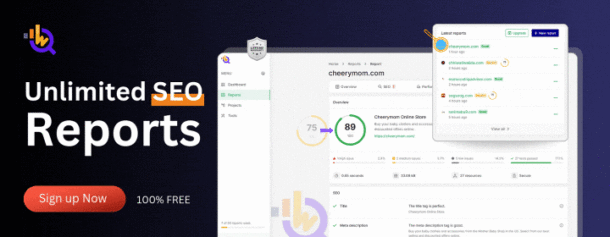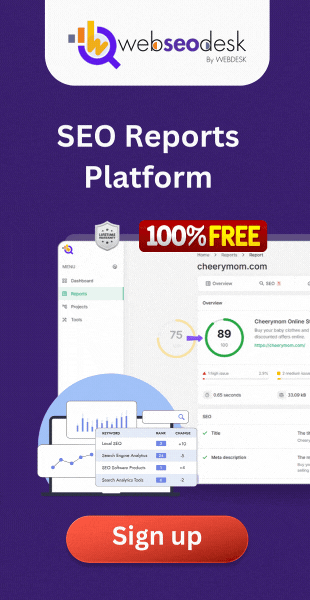Any website’s performance depends mostly on site speed, but this is especially true for SEO results. Since search engine algorithms are always changing and user experience is becoming more and more important, loading fast on your website becomes very crucial for enhancing SEO. The relevance of site speed will be discussed in this post together with how it directly affects your SEO results.
- User involvement and experience
Search engine rankings of websites depend much on user experience (UX). A slow-loading site causes users’ irritation, which frequently translates into high bounce rates. Users of a website are more likely to leave before they even get the chance to interact with your material when it loads too slowly, therefore cutting the time they spend on your site. Search engines employ session length and pages per session to assess the quality of your website, so this affects user engagement measures like these ones.
Conversely, a fast-loading site offers consumers a seamless and pleasurable experience. Quick loading on your website increases visitors’ likelihood of staying longer, browsing several pages, and turning into leads or customers. Better SEO results follow from strong signals sent to search engines by these positive engagement indicators that your website is relevant and valuable.
- Search Engine Ranking Elements
The most often used search engine, Google, is abundantly evident from its algorithm that site speed ranks highly. Actually, Google’s mobile-first indexing means that, for ranking purposes, the mobile version of your website is regarded as the main one; mobile consumers thus usually demand fast-loading websites. Websites that shine on mobile devices usually show better on search results.
One excellent technique to assess the performance of your website is via Google’s PageSpeed Insights tool. It offers doable suggestions for enhancing the loading time of your website, including image optimization, browser cache use, and server response time reduction. Solving these problems can help your website run faster and raise your chances of showing up higher on search engine results page (SERRs).
- Bounce and Conversion Rates
As was already noted, sluggish site speed results in more bounce. Bounce rate is the proportion of users that abandon your website following one page view. High bounce rates might alert search engines to your material not fulfilling user expectations, thereby affecting ranking. On the other hand, fast-loading websites have reduced bounce rates since users are more likely to remain and investigate more material.
Site speed effects conversion rates in addition to bounce rates. Your odds of turning visitors into paying consumers or leads will be much reduced on a slow website. Studies suggest that a one-second delay in page load time can lower conversion rates by up to seven percent. Thus, a speedy website increases the bottom line of your company by raising conversions, so improving your SEO as well.
- Site Velocity and Mobile Optimization
Optimizing your website for mobile consumers becomes increasingly crucial as mobile searches keep growing. Usually less patient than desktop users, mobile users demand websites to load fast on their devices. Should your website not be mobile speed compatible, you run the danger of losing possible visitors and compromising your SEO results.
Google ranks your mobile site in search results based on how quickly and effectively it performs using its mobile-first indexing. Maintaining a strong online presence and obtaining good SEO results thus depend on maximizing your site for both desktop and mobile.
- Site speed and core web vitals
Google debuted Core Web Vitals into its ranking factors not too long ago. Core Web Vitals are a collection of user experience indicators emphasizing loading performance, interactivity, and visual stability. Three main indicators are:
Largest Contentful Paint (LCP) gauges the loading times for the biggest apparent element on the page.
Measures a user’s speed of interaction with the page following page loading: First Input Delay (FID).
The cumulative layout shift (CLS) gauges page layout stability during load.
By raising these benchmarks, you can increase the performance of your website and thereby raise your SEO results. Optimizing for Core Web Vitals helps you to make sure your website satisfies Google’s revised performance criteria and offers a flawless user experience.
- How may site speed for SEO be improved?
You can increase the speed of your site by following a few doable actions, including:
Compress big photographs to cut their scale without sacrificing their quality. For reduced file sizes, use WebP, among others.
Turn on browser caching to save components of your website to consumers’ browsers so they won’t have to be reloaded every visit.
Minify HTML, JavaScript, and CSS files to cut their load times by means of their size.
Content Distribution Networks (CDN) are copies of your website’s content that are kept by a CDN at several sites all across the globe, therefore ensuring faster loading speeds depending on user geography.
Choose a dependable and quick web hosting service equipped to effectively handle the traffic of your website.
At last
Site speed is now absolutely vital for enhancing your search engine results and offering a good user experience, not a secondary consideration for SEO success. Low engagement, high bounce rates, and lost chances for conversion result from slow-loading websites. Optimizing the speed of your website not only improves SEO but also customer pleasure, which eventually increases traffic and therefore increases your company’s value. Recall that with SEO, faster is usually better.












0 Comments